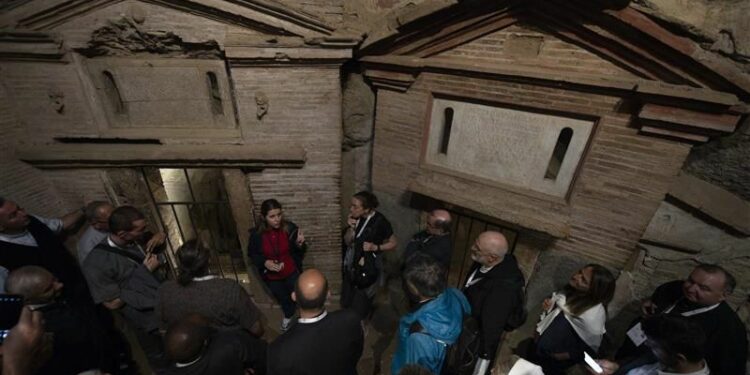“So evocative memory, directly perceived and experienced, cannot fail to arouse profound reflection and therefore, for believers, prayer; a prayer addressed to the Lord, God of life and savior, but also to the Martyrs and to those who witnessed their faith, whose example and whose intercession support us on the present journey,” the press release continued.
The commission was established by Pope Pius IX in 1852 “to take care of the ancient sacred cemeteries, look after their preventive preservation, further explorations, research and study” as well as to “safeguard the oldest mementos of the early Christian centuries, the outstanding monuments and venerable Basilicas in Rome.”
Visitors will have the opportunity to see many ancient symbols “that speak of prayer,” such as the 3rd century Cubicle of the Velata in the Catacomb of Priscilla, as well as early art depicting scenes from the Old and New Testaments.
The catacombs of Rome are Paleochristian burial sites scattered around the city that were dug underground during the height of the Christian persecution. Here many of Rome’s early popes, martyrs, and Christian families were entombed.
These sites assumed a deeply significant place in popular piety and have long been a place of encounter, prayer, and reflection for many of the Church’s saints, including St. Jerome and St. Philip Neri.
On March 2, several of Rome’s most prominent catacombs will be open to the public including the Catacomb of Priscilla, the Catacomb of Saint Agnes (where the third century Roman martyr was buried), the Catacomb of Callixtus (which contains the burial sites of popes between the second and fourth centuries), the Catacombs of San Sebastiano, the Catacombs of Domitilla, the Catacombs of Sts. Marcellino and Pietro, and the Catacomb of San Pancrazio.
Credit: Source link




